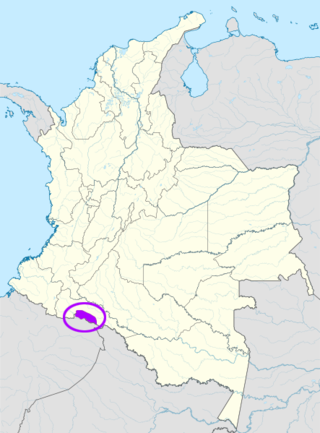Siona (otherwise known as Bain Coca, Pioje, Pioche-Sioni, Ganteyabain, Ganteya, Ceona, Zeona, Koka, Kanú) is a Tucanoan language of Colombia and Ecuador. Ecuadorian Siona and Colombian Siona, as well as Secoya, have a high level of mutual intelligibility, but have some lexical, morphological, and phonological differences between them.
| Siona | |
|---|---|
| Gantëya coca | |
| Native to | Colombia, Ecuador |
| Region | Putumayo River |
| Ethnicity | Siona people, Teteté people |
Native speakers | (500 cited 2000–2008)[1] |
Tucanoan
| |
| Language codes | |
| ISO 639-3 | Either:snn – Sionateb – Teteté |
| Glottolog | sion1247 |
| ELP | Baicoca-Siecoca (shared) |
 | |
As of 2013, Siona is spoken by about 550 people.[2] Teteté dialect (Eteteguaje) is extinct.[3]
Phonology
editVowels
editThere are 6 oral vowels and six nasal vowels. Only nasal vowels occur next to a nasal consonant /m/ or /n/.
| Back | Central | Front | |
|---|---|---|---|
| High | i ĩ | ɨ ɨ̃ | u ũ |
| Mid | ɛ æ̃ | o õ | |
| Low | a ã |
Consonants
editThere are two series of obstruent consonant. Both often produce a noticeable delay before the onset of the following vowel: the 'fortis' series (written p t č k kw s h hw) tends to be aspirated, with a noisy transition to the vowel, while the 'lenis' series (written b d g gw ’ z), optionally voiced, is glottalized, with a silent transition to the vowel, which in turn tends to be laryngealized. The glottal stop is faint, and noticeable primarily in the laryngealizing effect it has on adjacent vowels.
| bilabial | alveolar | prepalatal | velar | labio-velar | glottal | ||
|---|---|---|---|---|---|---|---|
| Plosive | fortis | pʰ | t̪ʰ | tʃʰ | kʰ | kʷʰ | ʔ |
| lenis | pˀ ~ bˀ | ʈˀ ~ ɖˀ ~ ɾ | kˀ ~ ɡˀ | kʷˀ ~ ɡʷˀ | |||
| Fricative | s ; sˀ ~ zˀ | h ; hʷ | |||||
| Nasal | m | n | |||||
| Semivowel | j ~ ɲ | w | |||||
/ʈˀ/ is realized as [ɾ] between vowels. /j/ is realized as [ɲ] next to nasal vowels.
Stress
editStress is obligatory on all verb stems, root words, and some suffixes. It disappears when the syllable is not the nucleus of a phonological word. Some monosyllabic morphemes have both stressed and unstressed forms. Although the position of stress within a word is not contrastive, vocalic and consonantal allophony depends on whether a syllable is stressed. Initial stressed vowels followed by unstressed vowels are long and have a falling tone.
References
edit- ^ Siona at Ethnologue (18th ed., 2015) (subscription required)
Teteté at Ethnologue (18th ed., 2015) (subscription required) - ^ "Vocabulary of the Language Used by the Indians in These Missions". World Digital Library. Retrieved 2013-05-23.
- ^ Hammarström (2015) Ethnologue 16/17/18th editions: a comprehensive review: online appendices
Internal links
editExternal links
edit- Wheeler, Alva. 1970. Grammar of the Siona language, Colombia, South America. Ph.D. thesis. University of California. 192 p.
- Vocabulario de la lengua que usan los indios de estas misiones. World Digital Library. c. 1600s. Retrieved 2013-05-23.
- Siona (Intercontinental Dictionary Series)